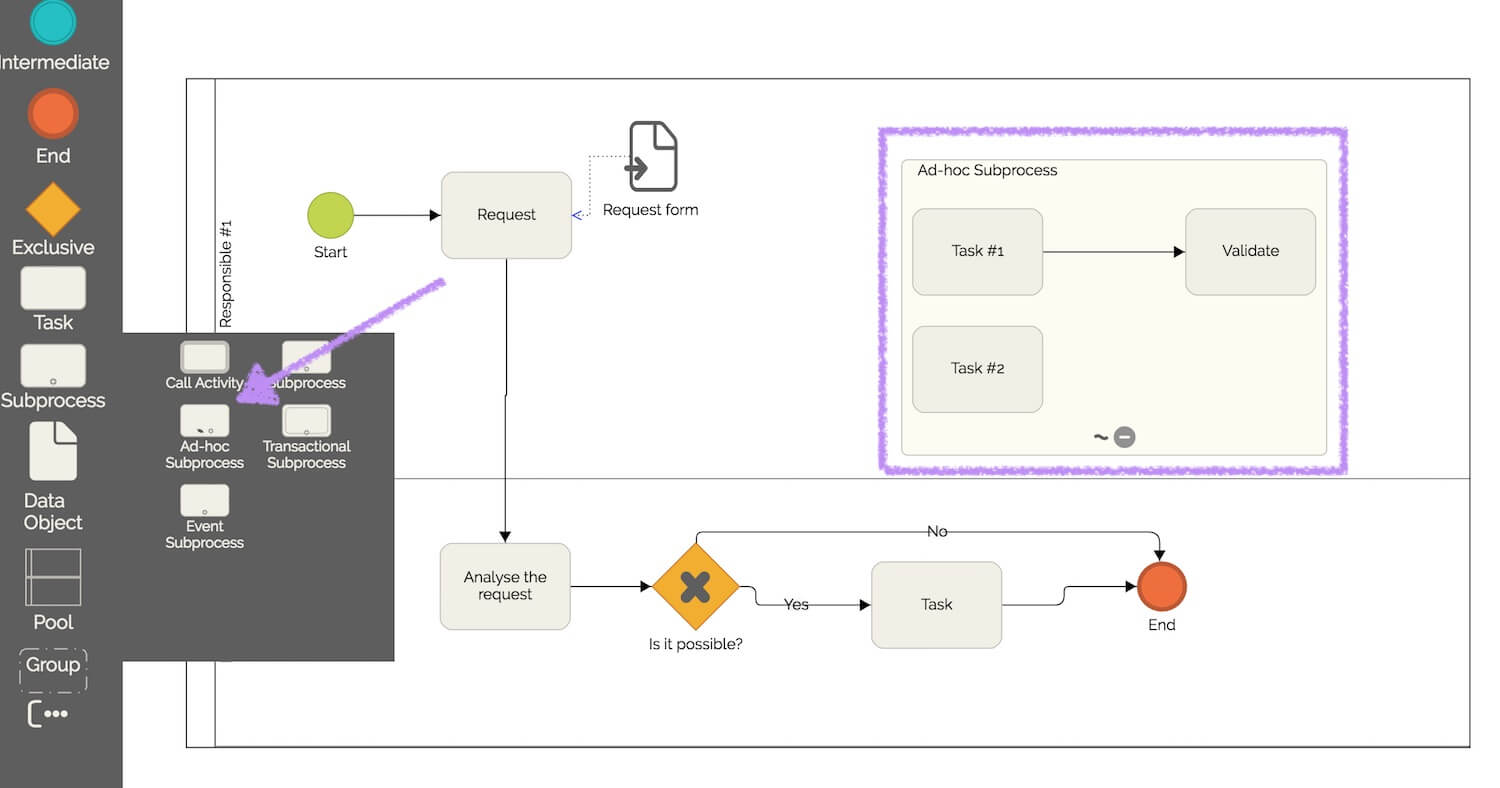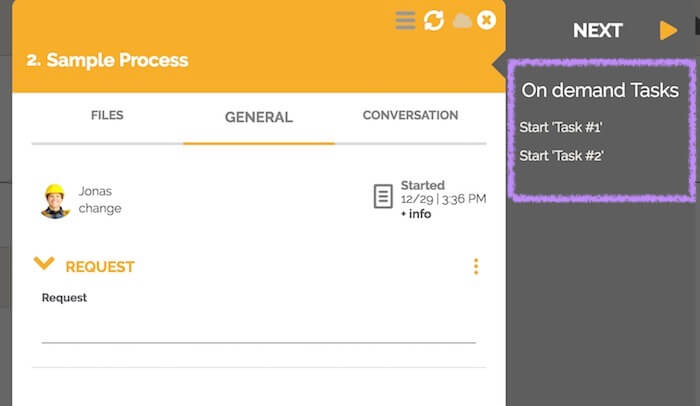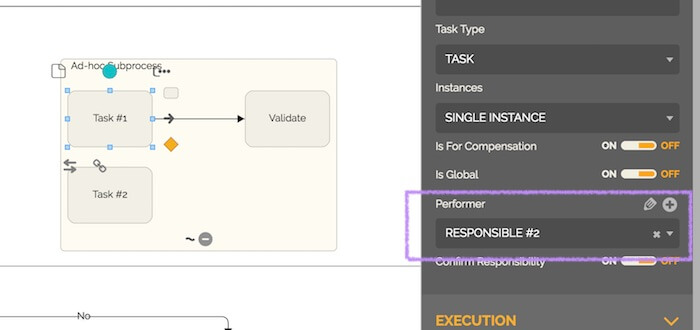Ad-hoc Subprocesses are used to create optional tasks that can be triggered in a process at any time. Here’s an example:

When the process is automated, there will be a link on the right sidebar to start each ad-hoc subprocess task that does not have input flows and is located in the same pool or outside any pool (global ad-hoc subprocess). In the above example, the tasks “Task #1” and “Task #2” meet these requirements.

Each task follows a flow parallel and receives a number consisting of the number of the process instance, a period, and a sequential number. See the example below:

Because of its multi-instance behavior, each ad-hoc task has an independent data repository.
Ad-hoc Subprocesses and Listings of Work Items
Subprocess tokens are displayed in the listing widget as separate items. Check out the figure below and see items 1 and 1.1. They are part of the process instance #1.

